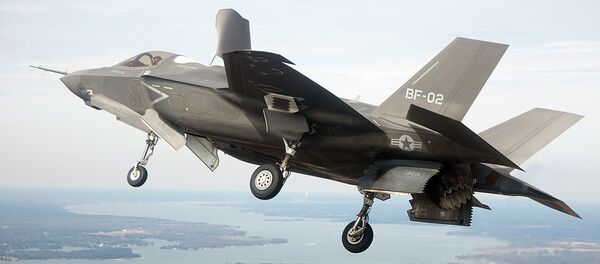While the F-35 Lightning II Joint Strike Fighter has seen its share of downfalls throughout its development, it has, at last, gotten off the ground. Declared combat-ready in July, the jets are the end-result of nearly $400 billion in research.
Even with that sizeable investment, the latest flight tests have shown the F-35 incapable of competing against not only its Russian and Chinese counterparts, but also older US fighter jets.
Despite those mediocre results, the United States isn’t the only military purchasing the aircraft from Lockheed Martin. The Italian Air Force (AMI) is also interested, and plans to buy 60 F-35As and 30 F-35Bs.These will replace the aging Panavia Tornado, AMX and McDonnell Douglas AV-8B Harrier II aircraft.
The Italian model, known as the AL-1, is being manufactured at Lockheed’s Cameri Final Assembly and Check Out (FACO) facility, and on Monday, the AL-1 conducted its first test flight. It stayed airborne for nearly an hour and a half, and the successful flight means that the Italian air force is on track to receive the first of its shipment by the end of 2015.
While the F-35A model relies on conventional flight methods, the F-35B is capable of vertical take-off and landing. The Italian FACO facility will produce both for not only the AMI, but also the Dutch Air Force.
Replacing its older F-16 Fighting Falcons, also made by Lockheed, the Netherlands plans to purchase 37 F-35As.
"The Cameri FACO is truly a national crown jewel, currently assembling the first eight Italian F-35As and producing wings for all F-35As fleet-wide," Lorraine Martin, executive vice president of Lockheed Martin, said during the March rollout of the AL-1, according to the company website.
"Additionally, as the European F-35 airframe Maintenance, Repair, Overhaul and Upgrade center, it will generate thousands of long-term, high-tech jobs for the Italian people for decades. Lockheed Martin is proud of its relationship with Italy and values the highly-skilled Alenia Aermacchi workforce building this incredible jet."
Now that Italy’s manufacturing plant is up and running, Lockheed also plans to open a facility in Japan and expand its operations in Fort Worth, Texas.
Still, those expansion plans could be for naught. A number of countries that had expressed interest in the aircraft early in its development have since opted out, citing concerns with the jet’s many problems.
"There were just too many technical difficulties involved in modifying a ship which takes helicopters to take fighter jets and it is also very expensive," a source with the Australian government told the Australian Financial Review.
"You can safely say it has been dropped."
Even the Pentagon has already expressed misgivings about meeting its original quota.
"Until the analysis is complete, we need to pursue the current scheduled quantity (2,443 aircraft) buy to preclude creating an overall near-term tactical fighter shortfall," Marine Corps commandant General Joseph F. Dunford, the next chairman of the Joint Chiefs of Staff, told the Senate Armed Services Committee in July.




